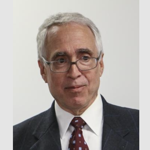The 'Quiet Crisis,' 10 Years Later
![]()
he word around Washington is that the Clinton administration is looking for anniversaries to celebrate in the coming year. Although the White House probably won't be celebrating the upcoming 20th anniversary of the independent counsel statute, there is at least one anniversary that everyone in Washington should note. January will mark 10 years since former Federal Reserve Board Chairman Paul Volcker convened the first meeting of the National Commission on the Public Service.
Led by some of the most distinguished public servants of their time, the commission labored for two years crafting what is still arguably the sharpest contemporary assessment of the state of the public service. Declaring a "quiet crisis" in government, the commission called on the nation to recommit itself to the highest traditions of the public service.
The term "quiet crisis" was a perfect description of the slow weakening of the public service in the 1970s and 1980s. Despite a comprehensive attempt to revitalize the federal service through the 1978 Civil Service Reform Act, the gap between federal and private pay was widening, bureaucrat bashing by the media and candidates was at an all-time high, the Office of Personnel Management had lost its focus under a director who believed that mediocre was good enough for government work, the public had lost confidence in its elected and appointed leaders, and America's best and brightest young people had lost interest in public service. Not surprisingly, morale within the civil service was at a modern low. Not since the spoils system of Andrew Jackson's time did civil servants have such good reason to feel beleaguered.
Ten years later, there is good news and bad news on the state of public service. On the upside, pay became much more competitive with passage of the 1990 Federal Pay Comparability Act, bureaucrat bashing in the 1996 presidential campaign declined somewhat compared to 1992 and 1980, and the Office of Personnel Management rebounded under the leadership of Constance Newman and Constance Horner. Meanwhile, Vice President Al Gore has made the restoration of public confidence a centerpiece of his reinventing government campaign.
The result has been a noticeable rise in federal workforce morale. The number of senior executives ready to recommend a career in government to young people rose from just 13 percent in 1987 to 32 percent 10 years later, while the number of federal employees at all levels ready to endorse government as a place to work rose from 49 percent in 1989 to nearly 60 percent last year. As for recruiting bright young people into public service, the Council for Excellence in Government recently reported that roughly 40 percent of 18- to 29-year-olds were likely to consider a job in government at some point in their careers, with 16 percent very likely to do so. All the percentages are moving in the right direction.
On the downside, the gap between public and private salaries is still large, the senior hierarchy still clogged with needless layers of political appointees, the Office of Personnel Management is desperately searching for a mission in a highly decentralized federal service, and the "M" in OMB is mostly invisible. Salaries may have gone up, but the pay gap remains, leading the Congressional Budget Office to warn that the "relatively low pay that the federal government offers for some jobs may be leading federal managers to accept less experience, education and other human capital characteristics for jobs than do private sector managers." Translated, federal managers may have no choice but to accept mediocre as good enough for government work.
At the same time, public confidence in government has continued to tumble. An overwhelming majority of Americans now believe that government wastes their money and causes more problems than it solves, and that their elected leaders will say and do just about anything to get elected, then do whatever they want. Americans see a difference between what government does and who does it. But the best way to increase public confidence still appears to be going on the attack, a point well-illustrated in the rebound in public trust that came with Reagan's war on waste in the 1980s.
Assessing the mixed evidence of renewal, the Volcker Commission would likely conclude that the quiet crisis continues. Although it would likely celebrate the current focus on performance and the undeniable gains in job satisfaction, the commission would probably place greater emphasis on the erosion of public trust, the failure to cut the number of political appointees, the general weakening of the president's central management agencies, and the unresolved tensions in cutting federal employment without slimming agency missions. The 10th anniversary of the Volcker Commission would hardly bring joyful celebration, which is why it probably won't make the list of White House parties.
Not all anniversaries are designed to be happy, however. Some merely serve to remind the nation how much still remains to be done. Perhaps when new OPM Director Janice Lachance is finally sworn in, she might raise a toast to progress made and invite her colleagues across government to recommit themselves to the highest traditions of public service. Given the current delays in the confirmation process, she should be entering office at just about the 10th anniversary.
Paul C. Light is author of The Tides of Reform: Making Government Work, 1945-1995 (Yale University Press, 1997) and drafted the final report of the Volcker Commission in 1988.
NEXT STORY: Useful Numbers







